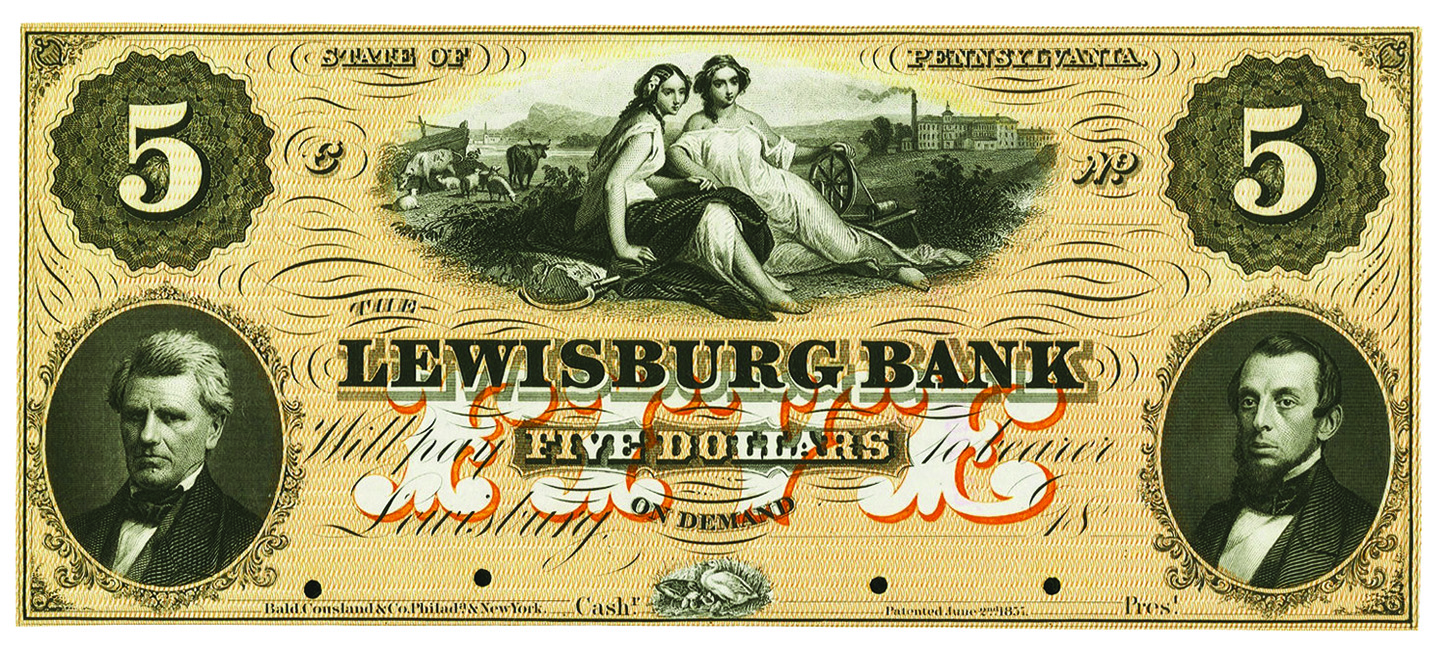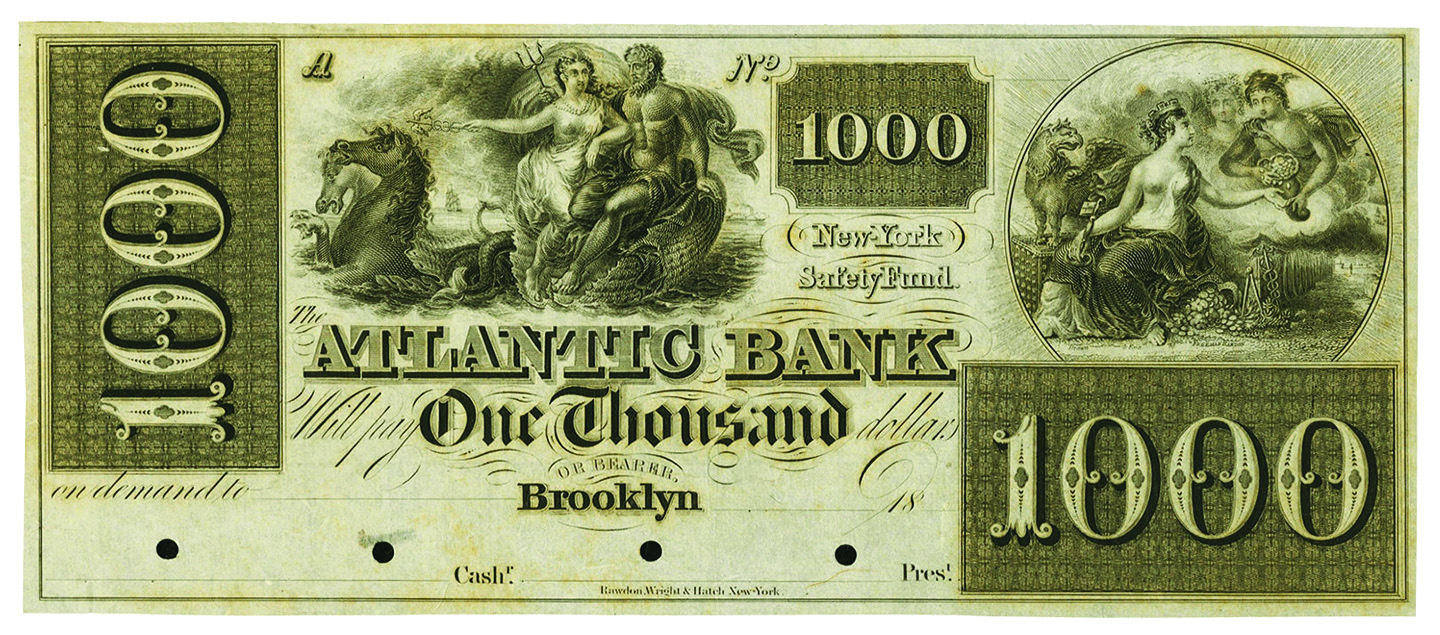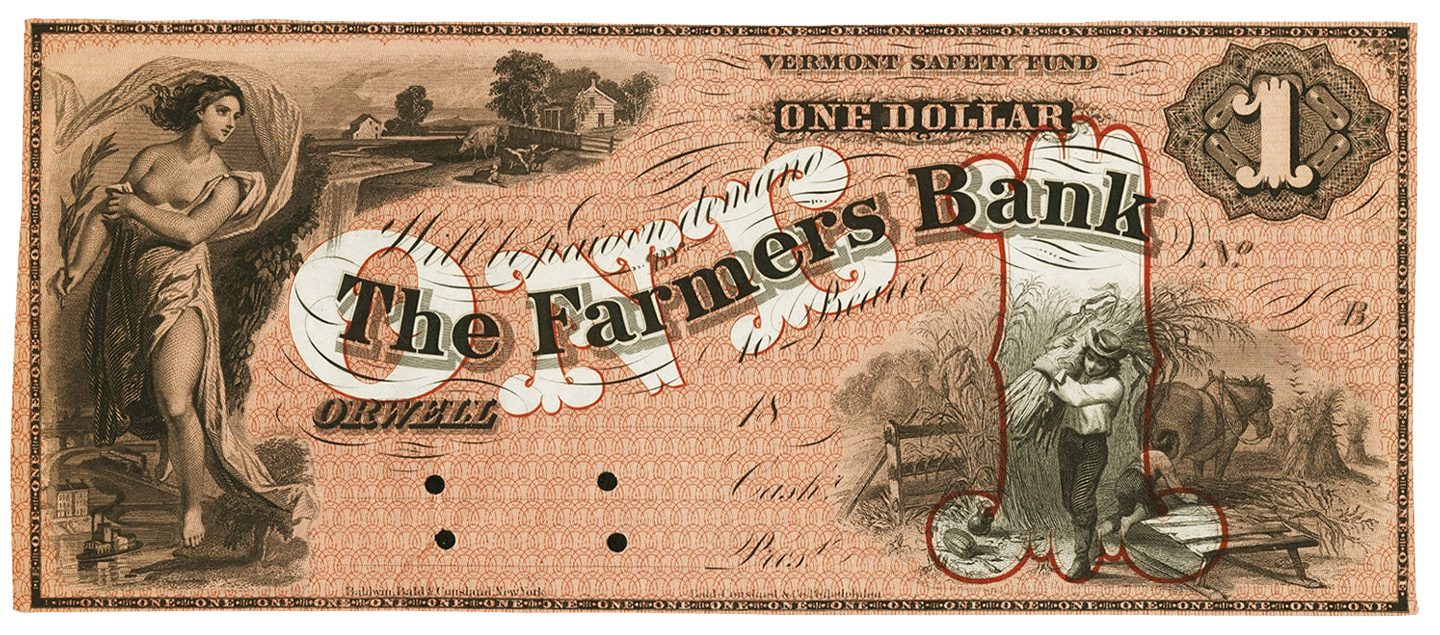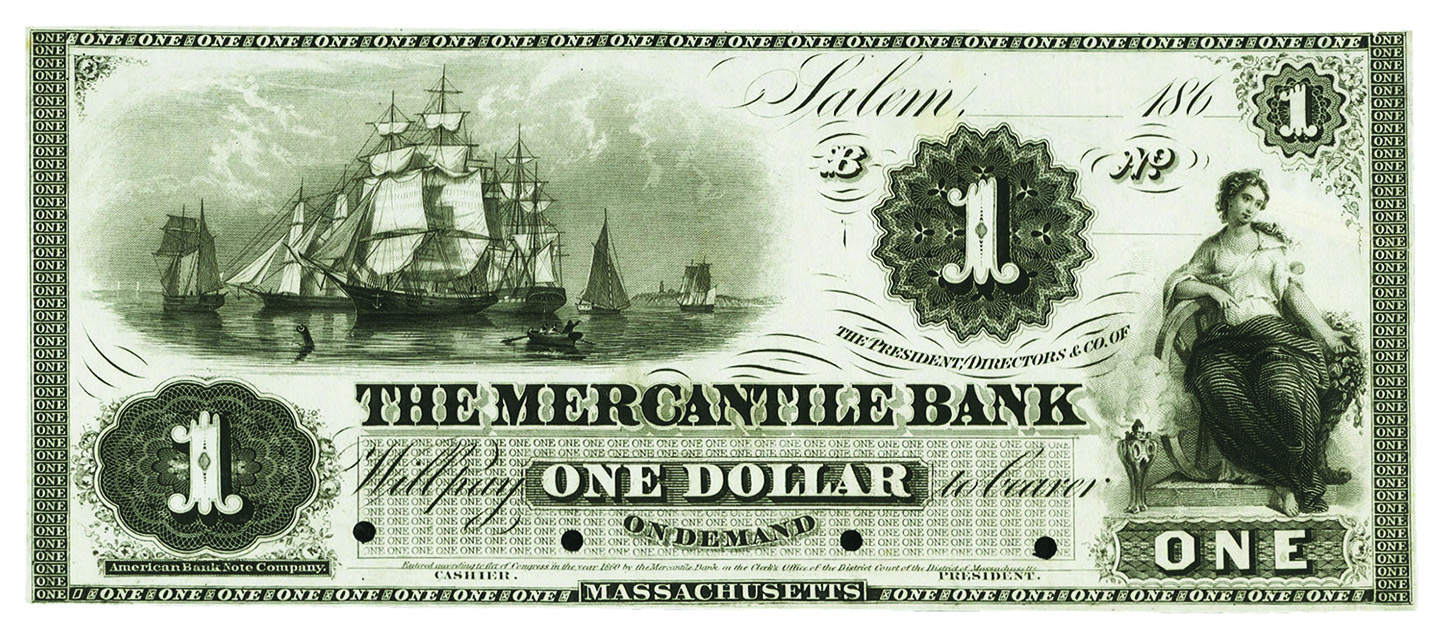The Fine Print
Obsolete bank notes have all sorts of information buried right in front of our eyes that can be easily overlooked. These details are often in fine print and are sometimes hidden. So, what types of data can you search for on these antebellum issues? Well, some you might expect, while others might come as a surprise:
- The printer of the note
- The artist or engraver of a vignette
- The name or title of the vignette
- The registration statement for a vignette.
Printer of the Note
This was almost universally included on all bank notes and scrip in the 19th century. The name of the bank-note company or lithographer was added in very small letters, often under the bank officer’s or signers’ signatures in the bottom margin, but sometimes elsewhere. A company’s name could change quite frequently as new partners were added or removed. This was particularly true prior to the formation of American Bank Note Company (ABNCo)—known today as ABCorp—in 1858, when seven companies merged under this new banner.
Many of the printing plates originally engraved by the individual predecessor firms continued to be used after 1858, and the general protocol was that if these plates were refurbished or retouched, then the ABNCo monogram was added to the plate. New plates created after the merger usually carry the American Bank Note Company imprint. To avoid confusion, you should also be aware that American Bank Note Company was a trade name used by Jocelyn, Draper, Welsh and Co. in 1854-58 (prior to the merger).

Interestingly, the bank note company imprint was also one of the most common diagnostics for detecting counterfeits. Counterfeiters tended to spend little time on the imprint, which resulted in nonuniform lettering and words and letters that did not share a common baseline, appearing instead to reflect the up-and-down course of a rollercoaster.
Artist or Engraver
The identities of the artists or engravers of many of the vignettes featured on obsolete bank notes and scrip have been lost to history, but a fair number of creators are credited in microlettering. Some of the principals of Rawdon, Wright, Hatch & Edson, for example, signed several of their vignettes—their signatures appear in microlettering at the bottom of the artwork. The most common names are those of George W. Hatch and Freeman Rawdon. Several other engravers, including Asher Brown Durand, also signed their work.

Vignettes
I used to think that very few vignettes were named or titled directly on bank notes. I have recently changed my opinion a bit as I find more vignettes are, in fact, titled. Again, these titles appear along the edge of the vignette in miniscule letters.
Vignettes were expensive to design and engrave and were considered valuable assets by bank-note companies. Many firms sought at least some way to safeguard their investment by registering the vignettes with the government, akin to a form of copyright protection. Proof of this registration was included on every bank note using the protected design, taking the form of a lengthy statement that would indicate, for example, that the vignette was “entered according to an Act of Congress in the Clerk’s Office of the District Court of the Southern District of New York in 1859.” The text varies a bit from vignette to vignette and company to company, but usually includes where and when the registration was filed and the name of the company that filed it.

A New Registration Type
While preparing this article, I ran across a type of registration that I have never before encountered. The Mercantile Bank of Salem, Massachusetts, apparently registered the entire note design that had been produced for it by American Bank Note Company. The wording of the registration is quite similar, stating that the design was “entered according to an Act of Congress in the year 1860 by the Mercantile Bank in the Clerk’s Office of the District Court of the District of Massachusetts.” The topic of registrations would benefit from further research. I’d like to find out the exact language of the congressional acts and learn if any litigation was ever initiated because someone used a “liberated” registered vignette. This practice seems to have been predominant in the 1850s and 1860s, at least in terms of text appearing on notes.

As you can see, sometimes a lot of information is provided in the fine print that has escaped the notice of some collectors due to the use of microprinting. Take a closer look at the notes in your collection and see what surprises await you.
A version of this article appeared in the October 2020 issue of The Numismatist (money.org).
